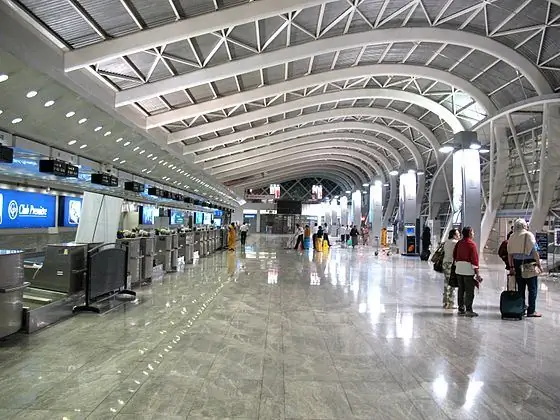- Author Harold Hamphrey [email protected].
- Public 2023-12-17 10:06.
- Last modified 2025-01-24 11:10.
One of the amazing cities famous for its majestic bridges is St. Petersburg. There are more than 800 bridges here, which have their own special design and materials used for manufacturing. They were built in different eras.

One of the amazing structures is the first cable-stayed bridge in St. Petersburg - Bolshoi Obukhovsky Bridge. It is a suspension bridge, which consists of a series of pylons connected to the road surface by steel cables. It is the first non-movable bridge across the Neva River, through which you can always get to the opposite bank if all other bridges are drawn.
The cable-stayed bridge of St. Petersburg is one of the parts of the ring road. It is located in the middle reaches of the Neva, on the border of the Vsevolozhsky district and the Nevsky district of St. Petersburg. With its help, Obukhovskaya Side Avenue and Oktyabrskaya Embankment are connected. For a long time they could not decide on the name of the bridge. fin althe decision was to name it after the surrounding area, but since a bridge with that name already exists in St. Petersburg, the prefix "Big" had to be added to the new bridge.

Its construction began in 2001. Monolithic reinforced concrete supports were installed on piles with a diameter of up to 1.7 meters. The width of each span, made of two longitudinal beams, is 25 meters, and the height is 2.5 meters. The length of the bridge, together with exits to the motorway, reaches 2884 meters, and the spans over the water are up to 30 meters high, which ensures free passage for all ships. As for the height of the spaced pylons that make up the St. Petersburg cable-stayed bridge, it is 123 meters. The roadway of the building is made in the form of an orthotropic plate, which is two steel sheets reinforced with longitudinal stringers (ribs).
The bridge is one of the longest in Russia. If you look at the bridge from a height, you can see two identical bridges located next to each other and having the opposite movement. Despite the fact that according to the plan, the completion of the construction of the first half was supposed to occur at the end of 2003, the grand opening of the first part of the bridge took place on December 15, 2004. After three years, on October 19, 2007, the second part of the cable-stayed bridge was opened no less solemnly.

Thus, the St. Petersburg cable-stayed bridge has eight lanes, four lanes on each part. Estimated throughputthe capacity now here is 80,000 vehicles per day.
All cable-stayed bridges have one advantage - the immobility of the canvas. In the world, these bridges are also used as railway bridges. Similar bridges have been built around the world since the 1950s. Today, the cable-stayed bridge of St. Petersburg is not just a convenient functional transport facility. It also serves as a decoration of the city, which is admired not only by local residents, but also by guests of the northern capital.
During the construction of the bridge, before the opening of the first line, the Cable-stayed Bridge Museum was organized. This is a unique museum of its kind, being the first and only museum in all of St. Petersburg dedicated to a specific building project. Here you can get acquainted with the history of construction, with details, designs and plans for the future, the prospects for quantum bridges.






